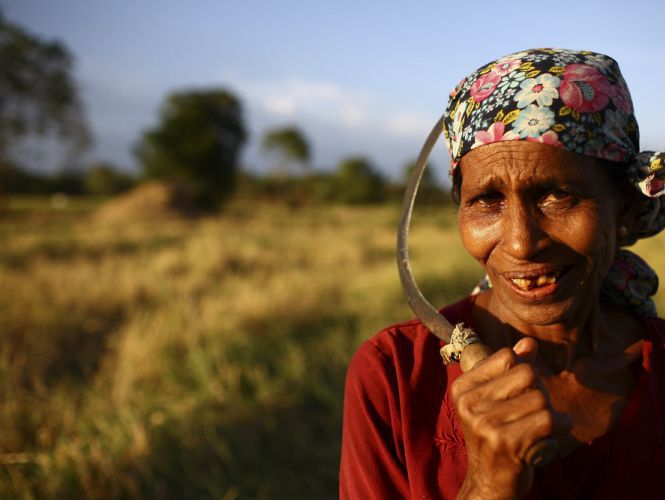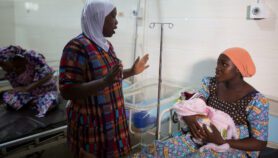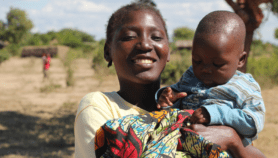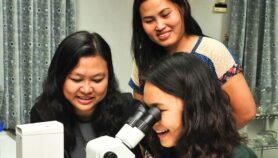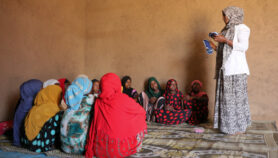By: Aisling Irwin
Send to a friend
The details you provide on this page will not be used to send unsolicited email, and will not be sold to a 3rd party. See privacy policy.
As we enter the last few days before the COP 21 climate change conference in Paris, France, you might have thought that gender campaigners could take a well-earned break. After all, climate campaigning is all about emissions controls, carbon trading and technology transfer. Does it need gender balance, too?
The answer, according to a recent paper from the International Institute for Environment and Development (IIED), is yes: it should be a central part of climate policy. [1] And this does not just apply in ‘softer’ areas, such as encouraging women to join in climate negotiations, but also to the design and use of technologies for climate mitigation and their transfer to developing nations.
“We are expecting women…to ensure [their fields] are managed according to practices such as climate-smart agriculture. But these interventions have been designed for men.”
Stella Gama, Ministry of Natural Resources, Energy and Environment
The IIED paper documents efforts over the last two decades to get climate negotiations to recognise gender issues. While mentions of gender have increased in decisions made over the last five years, their absence in relation to mitigation in the draft text of the new international climate change treaty is “disconcerting”, say the authors. [2] Meanwhile, references to gender and technology are weak.
Stella Gama, one of the authors, talks to me from Malawi where she vividly illustrates her point using her experiences as deputy director of forestry in the Ministry of Natural Resources, Energy and Environment.
“We are expecting women, who make up the highest population of farmers in least developed countries, to ensure [their fields] are managed according to practices such as climate-smart agriculture,” she says. “But these interventions have been designed for men.”
She cites one simple technology promoted in rural Africa to improve soils and reduce carbon emissions: using compost manure.
“Bringing manure from the village to the garden is labour intensive,” she points out. Men have the time and muscle power for such a task, but it is women who do it. Apply a gender lens and you might see a solution. Gama thinks ox carts are the answer.
“Climate change is anthropogenic… And that already has a gender dimension.”
Stella Gama, Ministry of Natural Resources, Energy and Environment
She also highlights contour ridging, a farming technique that cleverly uses earth ridges to harvest rainwater for crops and controlling soil erosion. Although it is a simple method, it requires training. Typically this happens in hub villages to which farmers from outlying villages must travel. But travelling is for men, who can also afford to spend a day away from home, says Gama. A woman has children to rear, meals to produce and a farm to till: a jaunt to another village may be out of the question.
So many simple technologies, says Gama, were designed for people who are strong, mobile and not too pressed for time.
Gama says adaptation to climate change will be more efficient if interventions are honed to women’s needs.
This matters most for efforts to combat climate change in the poorest countries: “If you look at our developed country colleagues, we are talking about mechanisation, electricity grids — it is difficult to see a gender perspective. But for us in Africa, and especially those of us that are least developed countries, we are accessing small technologies, where gender analysis and responsiveness are vital.”The authors are pressing for gender equality to be a guiding principle of the climate summit and treaty. Gama has encountered plenty of resistance: “Some people have said to me: this is a climate convention, not a gender convention. But climate change is anthropogenic. That means it is people who have caused it. And that already has a gender dimension. If you look at the carbon footprint, you will find that for men and women it will be different.”
Aisling Irwin is a science journalist and writer based in the UK, and a former SciDev.Net news editor.
References
[1] Janna Tenzing and others Advancing gender equality in the post-2020 climate regime (International Institute for Environment and Development, October 2015)
[2] Draft agreement and draft decision on workstreams 1 and 2 of the Ad Hoc Working Group on the Durban Platform for Enhanced Action (UNFCCC, 6 November 2015)


